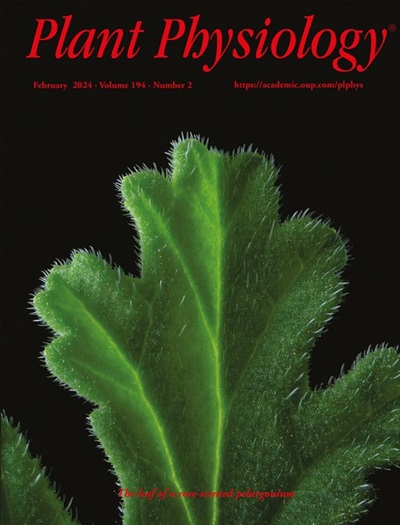亚热带常绿树和落叶树光合特性差异的叶片营养基础
IF 6.5
1区 生物学
Q1 PLANT SCIENCES
引用次数: 0
摘要
与常绿树种相比,落叶树种通常具有更高的光合效率,能在更短的生长期内完成无性和生殖生长。然而,常绿树种和落叶树种之间光合作用功能特性差异的营养基础尚未明确。研究人员比较了亚热带普通花园中 30 种常绿和 20 种落叶被子植物的光合作用特征和叶片养分。一般来说,它们在以面积为基础的光合作用能力方面的差异与以面积为基础的叶片养分含量无关,而是由分配给光合作用成分的氮的比例造成的。相比之下,质量光合作用能力的差异与叶片氮含量的相关性大于叶片磷和钾含量。磷和钾对光合作用的限制在落叶树种中趋同,而在常绿树种中则没有。此外,在决定常绿树种和落叶树种之间光合作用特征的差异方面,叶片C/N比比单位面积叶片质量起着更重要的作用。我们的研究结果有助于深入了解不同树种光合增碳的营养基础和功能策略。本文章由计算机程序翻译,如有差异,请以英文原文为准。
Leaf nutrient basis for the differentiation of photosynthetic traits between subtropical evergreen and deciduous trees
Compared to evergreens, deciduous tree species usually have higher photosynthetic efficiency to complete vegetative and reproductive growth in a shorter growing season. However, the nutrient basis for the differentiation of photosynthesis functional traits between evergreen and deciduous tree species has not yet been clarified. Thirty evergreen and twenty deciduous angiosperm tree species from a subtropical common garden were compared in terms of photosynthetic traits and leaf nutrients. Generally, their differences in area-based photosynthetic capacity were uncorrelated with area-based leaf nutrient content but were caused by the fraction of nitrogen allocated to photosynthetic components. By comparison, the differences in mass-based photosynthetic capacity were more correlated with leaf nitrogen content than leaf phosphorus and potassium content. Convergence in phosphorus and potassium constraints to photosynthesis occurred in deciduous tree species but not in evergreen tree species. Furthermore, leaf C/N ratio played a more significant role than leaf mass per area in determining the differentiation of photosynthetic traits between evergreen and deciduous groups. Our findings provide insight into the nutrient basis for photosynthetic carbon gain and functional strategies across trees species.
求助全文
通过发布文献求助,成功后即可免费获取论文全文。
去求助
来源期刊

Plant Physiology
生物-植物科学
CiteScore
12.20
自引率
5.40%
发文量
535
审稿时长
2.3 months
期刊介绍:
Plant Physiology® is a distinguished and highly respected journal with a rich history dating back to its establishment in 1926. It stands as a leading international publication in the field of plant biology, covering a comprehensive range of topics from the molecular and structural aspects of plant life to systems biology and ecophysiology. Recognized as the most highly cited journal in plant sciences, Plant Physiology® is a testament to its commitment to excellence and the dissemination of groundbreaking research.
As the official publication of the American Society of Plant Biologists, Plant Physiology® upholds rigorous peer-review standards, ensuring that the scientific community receives the highest quality research. The journal releases 12 issues annually, providing a steady stream of new findings and insights to its readership.
 求助内容:
求助内容: 应助结果提醒方式:
应助结果提醒方式:


